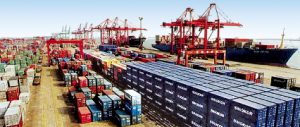In Europe, big changes are brewing for the air-travel industry. From 2012, carbon emissions from aviation – including those from non-EU airlines taking off or landing within the EU – will be included within the scope of the European Union’s Emissions Trading Scheme (ETS).
The news has not been greeted with universal cheer. In mid-March, the China Air Transport Association (CATA) issued a statement on behalf of Chinese airlines opposing this unilateral move. Then, during a session at the UN-led climate-change negotiations in Bangkok in April, China and other developing nations said that the European Union should find ways to achieve its 2020 emissions targets by itself, arguing that emission reductions in international aviation were a matter for multilateral negotiations.
Meanwhile, Chinese aviation has seen developments of its own. In mid-April, the General Administration of Civil Aviation of China (CAAC) issued new environmental guidelines for the domestic civil aviation sector, including an emissions-intensity reduction target of 22% by 2020.
Air travel is responsible for some 700 million tonnes of carbon emissions each year (around half of which comes from international aviation), representing 2.4% of the world’s total emissions. Emissions from airlines have been growing faster than any other sector, seeing a 98% rise between 1990 and 2006. They are expected to reach 800 million tonnes annually by 2020, and to account for between 2.5% and 10% of total emissions by 2050.
The United Nations Framework Convention on Climate Change includes restrictions on emissions from air travel. However, since international aviation involves so many countries, the categorisation of emissions has been difficult and so far discussions have remained at the technical level. The Kyoto Protocol does not limit international aviation emissions of Annex 1 industrialised nations, and neither the 2009 Copenhagen Accord nor the 2010 Cancún text contain a breakthrough in this area.
The main disagreement over allocation of aviation emission cuts between developing and developed nations remains centred around “common but differentiated responsibilities” – the UNFCCC principle that rich nations bear a heavier burden than poor nations in the fight against climate change. This is one of CATA’s reasons for opposing the move to extend the EU’s emissions trading scheme to cover aviation emissions, as well as its stance that the European Union has breached the principles of fairness and justice set out in the 1944 Chicago Convention on International Civil Aviation.
There are also financial concerns in the climate adaptation discussion regarding the aviation sector. The Green Climate Fund established at Cancún aims to raise US$100 billon (650 billion yuan) from the private sector by 2020 in order to help developing nations deal with climate change – and international aviation is considered a potential source of cash. Fundraising methods could include fuel or passenger tariffs, but these are controversial for several reasons: they do not directly encourage the industry to cut emissions; it would currently be difficult to ensure these methods satisfy the principle of “common but differentiated responsibilities”; and developing nations and industry associations worry about the impact on tourism.
Besides the UNFCCC, the International Civil Aviation Organization (ICAO) is the main promoter of emission cuts by the aviation industry. The second article of the Kyoto Protocol says that developing nations need to work with the ICAO to limit or reduce emissions from international aviation. At the 37th session of the ICAO, in October 2010, all member nations committed to a framework for emission targets: a 2% global annual average fuel-efficiency improvement to 2020 (and an aspirational target of a 2% annual improvement from 2020 to 2050); achieving carbon neutrality for the aviation industry by 2020; and producing international standards for aeroplane engine emissions by 2013.
But these are general goals, with no specific restrictions or binding requirements for individual member nations, and the practicalities of achieving them (including carbon-trading mechanisms) will not be discussed until the ICAO’s 38th session in 2013. It is clear that it will take some time for this body to turn commitments into action.
The European Union is leading the way in implementing aviation emissions cuts, and hopes to use regional reductions to promote wider cuts by the global air-travel industry. But the inclusion of international aviation emissions in the EU’s carbon trading scheme has been opposed by countries with developed aviation sectors outside of Europe. In late 2009, the United States’ air-transport sector took the British government to court over its inclusion in the scheme (the airlines involved were being administered in the United Kingdom under the ETS, hence the location of the hearing).
The EU directive on the inclusion of aviation emissions in the ETS makes it clear that Europe wants to maintain communication and negotiation on the issue with non-EU nations: article 17 of the directive points out that other governments can adopt “equivalent measures”, which can also interact with Europe’s trading scheme. The EU also hopes to promote the development of carbon-trading systems in other nations, and to link these with the ETS.
But most of the rest of the world is already pressing ahead with its own emissions-trading systems, and linking them all up will be time-consuming. If aviation is brought into the EU ETS in early 2012 as scheduled, we can expect that, in the run up, EU and non-EU nations will become absorbed in negotiations over “equivalent measures”.
Inter-governmental negotiations and court cases around the ETS are ongoing, and it is not yet clear whether or not there will be amendments to the policy. But one thing is certain: the aviation industry must learn to exist in a carbon-constrained world. Air travel is a highly competitive and capital-intensive sector, and any changes to markets or policy can have a strong impact. What factors does the industry need to take into account if it is to continue to grow in such an environment?
First and foremost is the cost of carbon. ICF International estimates that between 2010 and 2013 the EU ETS will cost airlines an extra €1.3 billion to €2 billion, growing to €6.5 billion and €13 billion by 2020. Credit-rating agency Standard & Poor’s meanwhile predicts additional costs of €1.125 billion between 2012 and 2013 (at €15 per tonne of carbon dioxide). Under an emissions-trading scheme, the aviation industry will be a net buyer of permits, and if the price of carbon increases, so will its costs. Carbon restrictions will inevitably present challenges for airline operations, in terms of fuel costs, aircraft leasing and depreciation expenses. Whether or not they will also provide potential opportunities and benefits to an airline will depend on how it optimises its carbon assets and turns those costs into a competitive advantage.
Second, how can airlines cut emissions? Aviation emissions are closely connected with fuel combustion and aircraft routing. The industry is highly sensitive to changes in the cost of aviation fuel, and therefore reducing fuel costs by increasing efficiency is a major objective for all airlines. The industry expects passenger numbers to continue to rise – and therefore only increased fuel efficiency can reduce the emissions incurred by increased capacity. Airlines and aeroplane manufacturers need to use all available methods to increase fuel efficiency: reducing airframe weight, improving aerodynamics, upgrading engines and so on.
New routes and more flights on existing routes will also increase emissions, and airlines need to consider the composition of their fleet in light of the routes they will fly in the short, mid and long-term. But the industry is unlikely to reduce the number of miles it flies in order to cut emissions. Hence, overall strategic planning is required– this includes planning the composition of aircraft fleets, looking for technical advances in airframes and engines, improving operational measures and, ultimately, sourcing clean fuels.
Third, non-EU airlines can consider using supplementary methods to participate in domestic carbon markets. The “equivalent measures” that the European Union is encouraging other governments to take may be an opportunity for developing nations to explore carbon markets for domestic industries. For example, in the CAAC’s recent guidance on emissions cuts in the domestic civil aviation sector, it was proposed that appropriate market mechanisms be used to achieve emission cuts. In the short term, the aviation industry can start by encouraging voluntary carbon-neutrality through corporate and individual carbon offsetting. This will gradually increase the airlines’ engagement with the carbon market, as well as boosting the demand for such a market and assisting its development in China.
Fourth, as well as carbon dioxide (70%), the aviation industry also emits water vapour (29%), nitrous oxides, carbon monoxide, sulphur oxides and particulates. The environmental impact and climate change effect of these other emissions cannot be ignored. In light of medium and long-term environmental regulation, the aviation industry must urgently consider its overall pollution strategy.
The emissions- debate within the air-travel sector is only going to get hotter. In a carbon-constrained era, participating in negotiations and pursuing litigation will not be enough – more important will be the adjustment of growth strategies in order to maximise competitive advantage.
China’s recent behaviour in this field demonstrates the pragmatic approach it is taking: putting forward fundamental principles for negotiations on international emission cuts and promoting multilateral talks; while establishing China’s autonomous emission-reduction policy for the domestic aviation sector, preparing the necessary management and institutional structure, technologies and market mechanisms, and using staggered industry emission cuts to keep in step with the country’s wider carbon targets. This is a positive signal – we now look forward to further progress from the aviation industry.
Luo Rui is a senior consultant at ICF International.
Homepage image from dayou


